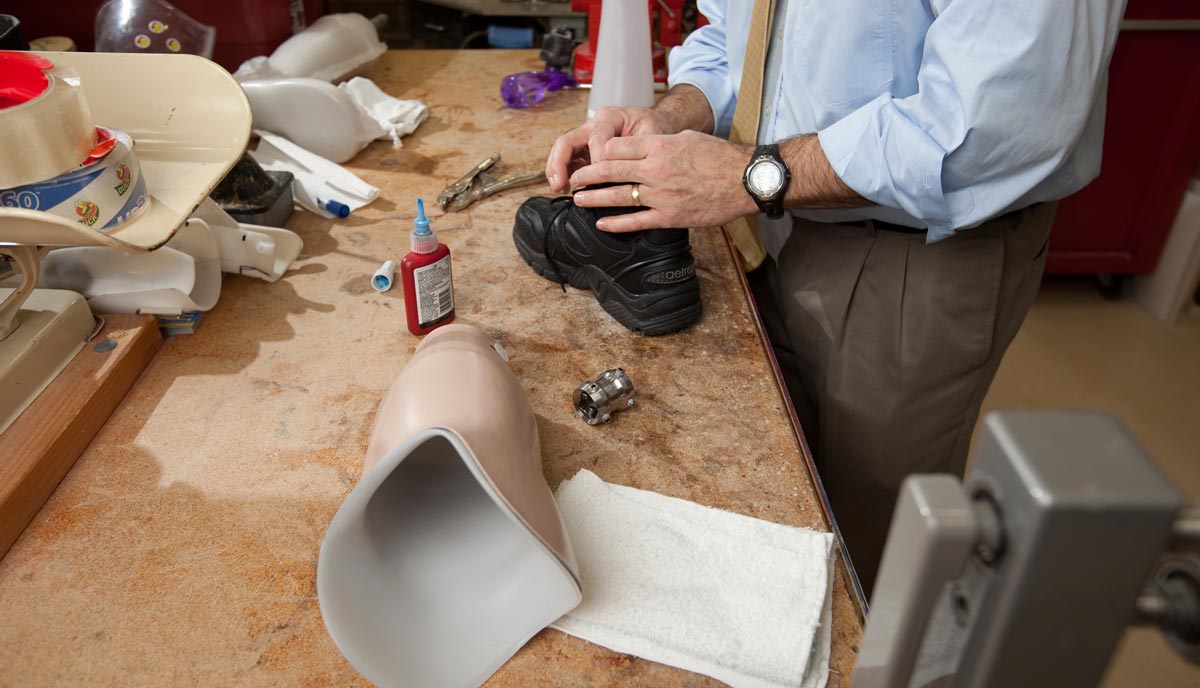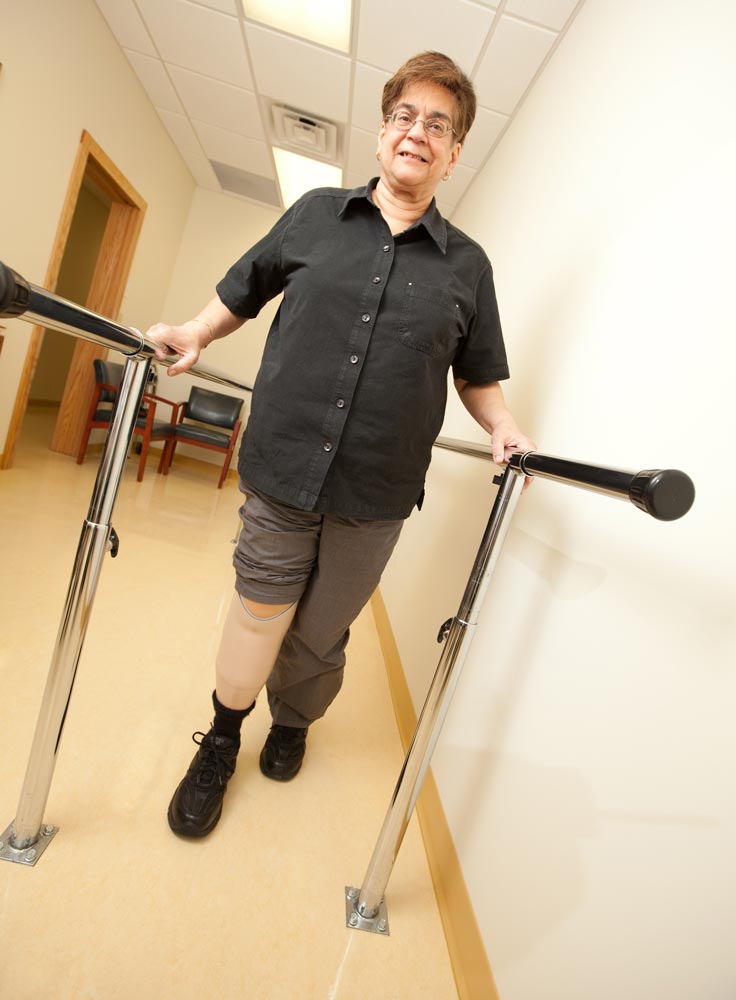Gloria
POA Success Stories
Gloria
Dysvascular amputations, based on problems associated with the blood vessels account for a significant proportion of limb loss.
Gloria Cavaliere, like many diabetics, experiences circulatory problems in her lower extremities.
The lack of blood flow on her right side was so severe that she had to undergo the amputation of several toes. Not long after, all of her toes had to be removed. Ultimately, she developed gaseous gangrene, which necessitated the amputation of her leg below the knee in December 2010.
In the United States, where it’s estimated that one out of every 200 people has an amputation, Gloria’s is a familiar story. Dysvascular amputations, based on problems associated with the blood vessels, similar to what Gloria experienced, account for a significant proportion of limb loss.
Data from the National Limb Loss Information Center indicates that dysvascular amputations account for the largest percentage of amputations and that the incidence of amputations for this reason rose by approximately 27 percent between 1988 and 1996, while rates of cancer- and trauma-related amputation fell by almost half over the same time period. The same data indicates that lower-limb amputations accounted for 97 percent of all dysvascular limb-loss hospital discharges.

Relearning to walk
The amputation of a lower extremity means patients need to relearn how to walk and adjust to life using a walker, wheelchair or prosthesis so that they can maintain their quality of life. The first priority, however, must be to heal the residual limb.
Immediately following amputation, a residual limb will be painful and swollen; this is a normal part of the healing process. Shaping of that residual limb is an important step in the recovery process and lays the groundwork for fitting a patient with a functional prosthesis. What begins as a bulbous distal limb is ultimately molded into a cylindrical shape that suits a prosthesis.
“The RRD was very easy to take care of and took no time at all to get used to. It quickly became a part of me.”
Removable Rigid Dressing (RRD)
There are different approaches to shaping a residual limb, including the use of elastic bandages, fabric-shrinkers and plaster molds. One of the approaches Prosthetic & Orthotic Associates uses is a custom-made thermoplastic dressing, referred to as an RRD, or Removable Rigid Dressing, for patients like Gloria. The RRD approach was developed by Dr. Yeongchi Wu and Harold Crick, CP, at the Rehabilitation Institute of Chicago, which is consistently the highest-rated rehabilitation hospital in the U.S. Several of POA’s clinicians trained at the RIC affiliated Northwestern University Medical School’s Prosthetic and Orthotic Program, resulting in the team’s in-depth knowledge of the RRD system.
An advantage of the plastic RRD is that it provides easy access to the limb so that the patient, prosthetist and nursing staff are all able to care for and inspect the wound site. The RRD provides uniform pressure, prevents post-surgical edema and protects the wound, promoting rapid healing and limb shaping. It can also be used for graded weight bearing in preparation for use of the prosthesis. Dr. Wu’s research with this system concluded that there is a significant reduction in the time between amputation and ambulation when using this system for patients like Gloria.
“People who have had a recent amputation may not, in the middle of the night, immediately remember that they’re missing their leg, go to stand up and fall down,” said Thomas Passero, CP. “During the healing process, a fall like this can cause sutures to break open, which delays recovery.

Accelerated healing time
“With the RRD, the wound is well protected, so if there is a fall, the patient won’t sustain any injuries,” said Thomas. “An RRD also accelerates healing time; with Gloria, who had her amputation at the end of December, she was fitted with the RRD in January and was ready to receive her prosthetic leg in February.”
“Because I had the RRD, I wasn’t so afraid of falling as I might have been without it,” said Gloria. “I have fallen a few times since the amputation and because of the RRD, didn’t have any injuries.
“It was very easy to take care of and took no time at all to get used to,” said Gloria. “It quickly became a part of me. It’s the first thing I put on and the last thing I take off.”
Though the former real estate appraiser is still adjusting to her prosthesis, her upbeat attitude and the support of her prosthetist and surgeon have made the transition much easier.
“Thomas and POA have been wonderful – I can’t say enough good things,” said Gloria. “It was the hospital that first recommended Thomas; they originally called him and set things up. He listens to me. When I had discomfort, he figured out why rather than just give me a standard answer. He’s been awesome, and, I think, gone way beyond what someone else would have done. He has really helped me out a lot.”